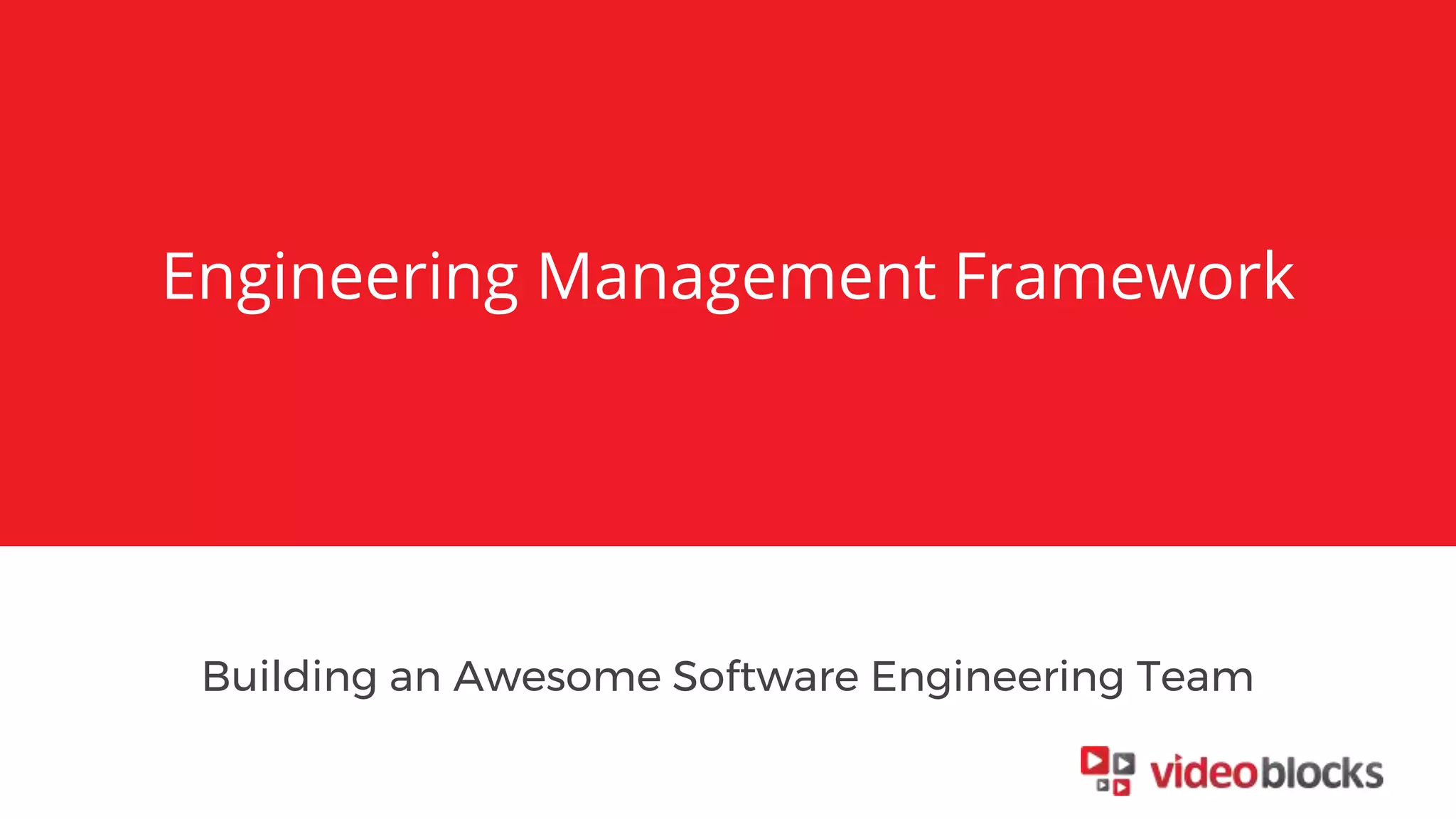The engineering management framework outlines strategies for building a successful software engineering team through effective people, processes, technology, and culture. It emphasizes the importance of talent acquisition, internal mentorship, structured roles, and a well-defined development pipeline, alongside fostering psychological safety and a supportive organizational culture. Key components include autonomous and purposeful work, continuous skills development, effective communication, and strategic use of technology and tools.





















